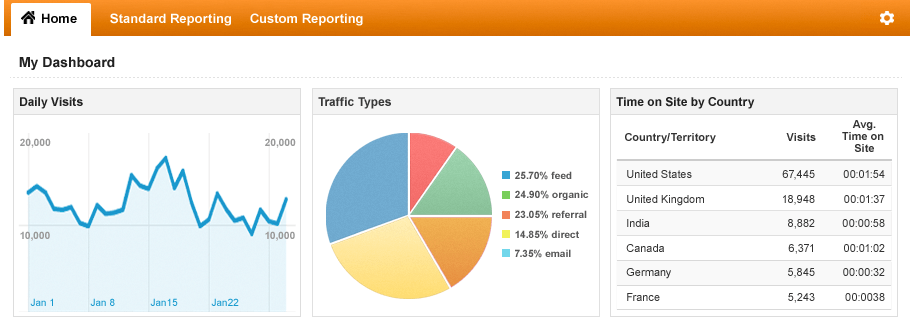Google Analytics Tracking
GOOGLE ANALYTICS IS THE MOST POWERFUL TOOL USED TO LEARN MORE ABOUT YOUR SITE’S TRAFFIC.
That’s why we integrate Google Analytics (GA) into every website we create and host. The benefits of GA are only limited to what you know about your web traffic, how to interpret the data the software provides and what specific action needs to be taken based on the quantified data. That’s where we come in.
As a full-service web marketing company, we choose to only rely on the most detailed data to come up with strategies that adapt to the evolutionary nature of Internet traffic patterns. What we knew about the Internet traffic patterns and search engine optimization 6 months ago has completely changed today. 6 months from now, it will have undoubtedly progressed further along its evolutionary course. It’s not only easy, but inevitable, for businesses to get lost with their own SEO efforts before they ever begin unless they know what we know. Very few do. We rely on the data GA provides as a baseline for our strategy development.
GA’s approach is to show high-level, dashboard-type data for the casual user (probably you, a specific team leader or sales manager). For developers and SEO experts (Petry Design), GA provides more in-depth data further than the report set.

GA analysis can identify poorly performing pages with techniques such as funnel visualization, where visitors are coming from, how long they stayed on that page and their geographical position. It also provides more advanced features, including custom visitor segmentation.
It doesn’t help to know how many hits your site is getting. That doesn’t interest us, nor should it interest you, when stacked up against the other data that GA provides. Hits are just a measurement of how much more potent our strategies need to be in order to get more activity that leads to conversions. Conversions are goals your company has and can include:
- Sales (Usually The Primary Goal)
- Lead Generation Or Other Specific Inquiries
- Getting Visitors To View A Specific Page Or Download A Certain File
- Submit Information Through A Contact Or Quote Form
- Subscribe To Newsletters Or Internet Marketing Campaigns
- Nearly Any Other Traceable Effort Exerted On Behalf Of The Site Visitor
